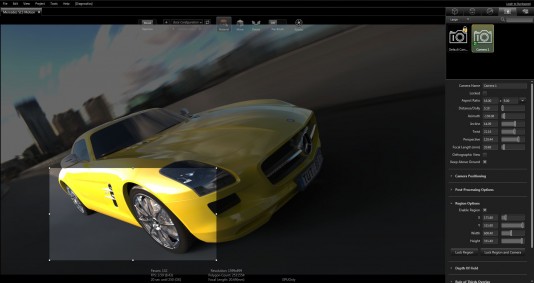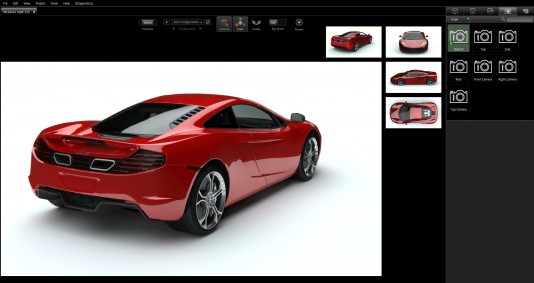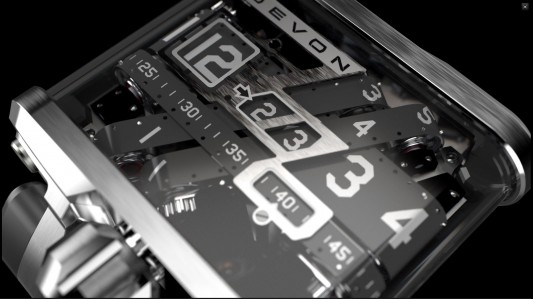A variety of new features focus on workflow and new visualization options.
Bunkspeed has released an upgrade to its product design visualization software line, with new features that include material stacking, region render, and multiple working viewports. Version 2012.4 updates to Shot, Move, Pro (a bundle of Shot and Move), and Drive are now available.
Region render (available in Pro and Drive suites) allows the user to choose a subset of an image to render. Region rendering is camera-specific, so various regions can be specified on multiple cameras. Bunkspeed considered region rendering a key professional-level workflow and productivity enhancement to its product line.

The new multi-layer materials feature (available in Pro and Drive Suites) allows materials to be layered for custom effect. It is possible, for example, to have a “glass layer” on top of “carbon fiber,” or a “dirt” texture map on top of car paint. Materials can be stacked with up to four layers, making possible sophisticated and complex material renditions.
There is now auto-updating of back plates and high dynamic range images edited in any open application (available in all products). Auto-update monitors a file for changes on the file system. For example, if the user is editing a back plate in Photoshop, when the change is saved Bunkspeed products detect the change and automatically update the file. This creates an interactive workflow for rapid update and iteration of in-session edits. Common workflows include lighting creation and HDR enhancement in HDR Light Studio, back plate painting in Photoshop, or texture creation in Filter Forge.
Baked lighting (available in Drive) improves the quality and believability of models during rasterized rendering, giving “near” ray trace quality with fast and noise-free interactivity.

Multiple working viewports (available in Pro and Drive suites) offers up to four viewports visible simultaneously, with each viewport referencing a separate definable camera, model set, or environment. Suggested uses include presentations, reviewing multiple variations simultaneously, or even working on animation set up where the animated camera can be viewed in one viewport and the animation ribbon can be adjusted in another.

Other new features include:
- Full screen mode
- Network rendering improvements
- New Pro/E and Creo plug-in.
More details on the Bunkspeed upgrades are available in the product release notes.
Behind the rendering
For several years Bunkspeed developed products based on Luxion’s materials-based rendering technology. In 2010 it switched to Nvidia’s Mental Ray ray tracing technology, and now seems to be applying its expertise in both approaches to improve its products.






